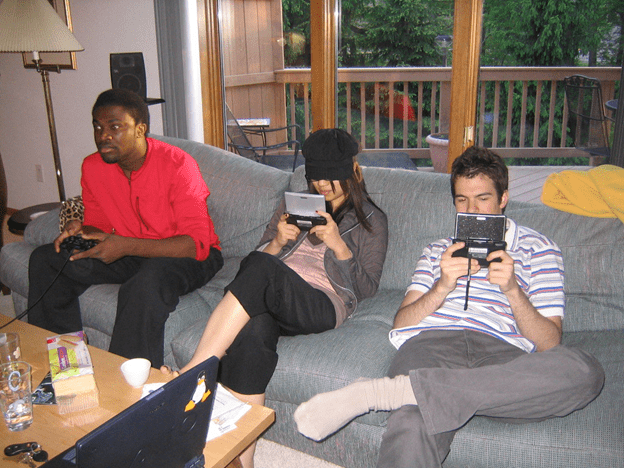The Federal Circuit has reversed the Northern District of California’s dismissal of a complaint for patent infringement, finding that the complaint included factual allegations of an inventive concept.
The patent at issue (the ’452 patent) relates to systems and methods of structuring a peer-to-peer (P2P) dynamic network for distributing large files, namely videos and video games.
As the court noted,
In prior art systems, video streaming was controlled by content distribution networks (CDNs), where the content was “distributed directly from the CDN server originating the content.” … The ’452 patent, in contrast, claims methods and systems for a network in which content distribution occurs “outside controlled networks and/or [CDNs],” i.e., outside a “static network of controlled systems.” … It does this with dynamic P2P networks comprising “peer nodes,” i.e., nodes consuming the same content contemporaneously, that transmit content directly to each other instead of receiving content from the CDN.
To facilitate content distribution, the claimed P2P networks use “content segmentation” in which a video file, for example, is segmented into smaller clips and distributed piecemeal. As a result, viewers can obtain individual segments as needed, preferably from other viewers….. Content is segmented using several techniques, including “CDN address resolution, traceroute to CDN and the P2P server manager, dynamic feedback from peers reporting traffic rates between individual peer and its neighbors, round-robin, other server-side scheduling/resource allocation techniques, and combinations thereof.”
(Emphasis added by the court.)
Cooperative Entertainment, Inc., which owns the patent, sued Kollective Technology, Inc. for infringement of the patent. The United States District Court for the Northern District of California dismissed the complaint under Rule 12(b)(6), holding all claims of the patent ineligible under 35 U.S.C. § 101.
35 U.S.C. § 101 states that
Whoever invents or discovers any new and useful process, machine, manufacture, or composition of matter, or any new and useful improvement thereof, may obtain a patent therefor, subject to the conditions and requirements of this title.
The court noted that patent eligibility is a question of law but may depend on underlying issues of fact.
To determine patent eligibility, said the court,
we apply the Supreme Court’s two-step Alice framework. See Alice Corp. v. CLS Bank Int’l, 573 U.S. 208, 217 (2014). At step one, we determine whether the claim is “directed to” a “patent-ineligible concept,” such as an abstract idea. Id. If it is, at step two we examine “the elements of the claim to determine whether it contains an ‘inventive concept’ sufficient to ‘transform’ the claimed abstract idea into a patent-eligible application.”
Specifically, said the court,
we determine whether the claim elements, individually and as an ordered combination, contain an inventive concept, which is more than merely implementing an abstract idea using “well-understood, routine, [and] conventional activities previously known to the industry.”
In this case, the court found,
There are at least two alleged inventive concepts in claim 1 which should have precluded the district court’s holding on ineligibility. The first is the required dynamic P2P network wherein multiple peer nodes consume the same content and are configured to communicate outside the CDNs. ’452 patent at claim 1 (“at least one peer-to-peer (P2P) dynamic network including a multiplicity of peer nodes, wherein the multiplicity of peer nodes consume the same content within a predetermined time, . . . wherein the multiplicity of peer nodes is distributed outside controlled networks and/or content distribution networks (CDNs)”). The second requires trace routes to be used in content segmentation.
Because Cooperative plausibly alleged that both of these concepts were inventive, the court reversed the district court’s dismissal.
The case is Cooperative Entertainment, Inc. v. Kollective Technology, Inc.
Just like the haiku above, we like to keep our posts short and sweet. Hopefully, you found this bite-sized information helpful. If you would like more information, please do not hesitate to contact us here.


